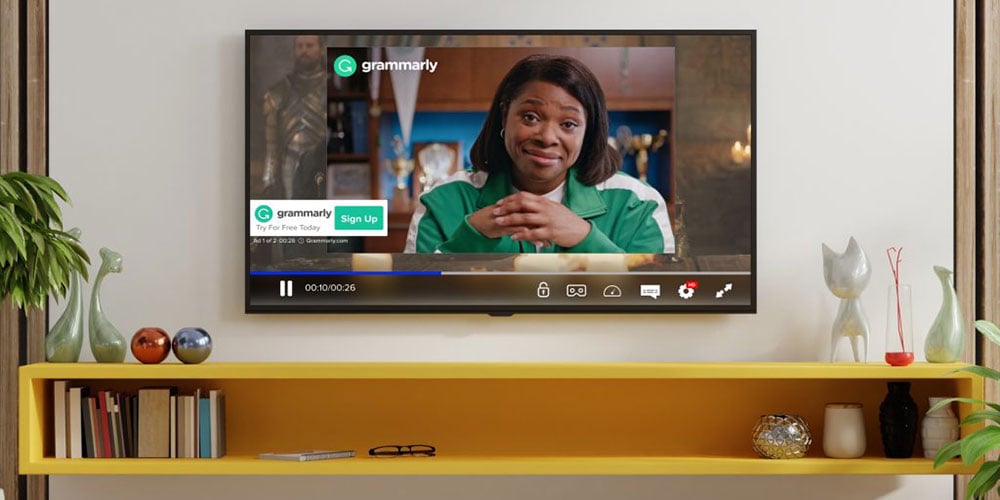CTV Ads for Nonprofits: How Streaming TV Boosts Donations & Awareness.
Streamworks Blog

Picture this: It's Tuesday evening, and Sarah is streaming her favorite show on Roku. Between episodes, she sees a compelling 30-second video about a local food bank's urgent winter donation needs. She's moved, engaged, and—most importantly—she acts. Within minutes, she's made her first donation.
This isn't fantasy. It's happening every day through Connected TV (CTV) advertising, and nonprofits that aren't paying attention are missing one of the most powerful fundraising opportunities available today.
Why Connected TV Advertising Matters for Your Nonprofit
Your Donors Have Cut the Cord
Traditional TV viewership is plummeting while streaming explodes. 83% of U.S. households have streaming subscriptions, with the average household using four different platforms. Your future major donors—especially Gen Z and Millennials—are increasingly unreachable through traditional television.
But here's the game-changer: streaming viewers maintain 96-98% completion rates, creating a captive audience for your mission-driven messages. Unlike traditional TV viewers who leave during commercial breaks, streaming audiences stay engaged.
The Perfect Storm for Nonprofit Success
CTV advertising combines the emotional impact of video storytelling with digital advertising's precision targeting. It's like having the best of traditional TV and online marketing in one package—and 87% of brands say CTV advertising outperforms traditional TV ads.
Understanding Connected TV: Key Terms Decoded
Connected TV (CTV): Any internet-connected television (smart TVs, Roku, Apple TV, gaming consoles)
Over-The-Top (OTT): Streaming content delivered over the internet (Netflix, Hulu, YouTube TV)
Linear TV: Traditional scheduled television programming
The beauty of CTV? It feels like traditional television to viewers, but operates with sophisticated digital targeting and measurement capabilities.
How CTV Advertising Transforms Nonprofit Fundraising
Laser-Focused Targeting
Unlike traditional TV's spray-and-pray approach, CTV lets you target with surgical precision:
- Geographic targeting: Focus on specific cities, regions, or ZIP codes
- Demographic targeting: Reach specific age groups, income levels, or interests
- Behavioral targeting: Target people who've visited your website or similar organizations
- Retargeting: Re-engage visitors who didn't donate initially
Cost-Effective Entry Point
Traditional TV required massive budgets that excluded smaller nonprofits. CTV advertising starts at just $1,000 per month, with CPMs typically ranging from $15-40—often more cost-effective than traditional TV when factoring in improved targeting.
Measurable Results
CTV provides detailed analytics traditional TV never could:
- Impression and reach data
- Video completion rates
- Click-through rates to your website
- Conversion tracking and cost per acquisition
- Return on ad spend (ROAS)
Your CTV Advertising Quick-Start Guide
Step 1: Define Goals and Audience
Before creating ads, determine if you want to:
- Drive direct donations for specific campaigns
- Build organizational awareness
- Promote upcoming events
- Retarget website visitors
Define your target audience specifically: demographics, interests, giving history, and behaviors.
Step 2: Create Compelling Video Content
You don't need Hollywood budgets. Successful nonprofit CTV ads use:
- Smartphone footage of programs in action
- Beneficiary testimonials
- Simple graphics and text overlays
- User-generated content from supporters
Pro tip: Keep videos 15-30 seconds, focus on emotional storytelling, and include clear calls-to-action.
Step 3: Choose Your Platform
- Advertising agencies: Best for CTV newcomers
- Self-service platforms: More control, requires expertise
- Specialized nonprofit services: Tailored pricing and support (like AdGood)
Step 4: Budget Smart
- Minimum effective budget: $1,000-2,500/month
- Small campaigns: $2,500-7,500/month
- Medium campaigns: $7,500-20,000/month
- Large campaigns: $20,000+/month
Start small, test, optimize, then scale up.
Maximizing Your CTV Campaign Success
Best Practices That Work
- Lead with stories, not statistics: Create emotional connections through real beneficiary impact
- Simplify calls-to-action: Use easy-to-remember URLs or text-to-give codes
- Test multiple creative approaches: Different stories, tones, and CTAs
- Coordinate with other marketing: Integrate with email, social media, and direct mail
- Optimize for mobile: Many viewers will visit your site on their phones
Common Pitfalls to Avoid
- Targeting too broadly: Use CTV's precision capabilities
- Ignoring creative quality: Professional-looking content is essential
- Setting unrealistic expectations: Be patient while optimizing
- Forgetting frequency optimization: Aim for 3-5 exposures per viewer
Measuring Success Beyond Donations
Track broader campaign impacts:
- Brand awareness: Increased search volume for your organization
- Website traffic: More program exploration
- Email signups: New subscribers for cultivation
- Social media growth: Increased followers and engagement
- Volunteer interest: More people want to get involved
The Future of CTV and Nonprofit Fundraising
CTV advertising is still emerging, creating tremendous opportunities for early adopters. Watch for:
- Interactive ad formats enabling direct TV donations
- Better CTV and social media integration
- Advanced attribution modeling tracking full donor journeys
- Voice-activated responses through smart TVs
Start Your CTV Journey Today
Connected TV advertising isn't just about keeping up with technology—it's about maximizing your mission's impact by meeting donors where they actually are.
You don't need massive budgets or dedicated video teams. You need clear goals, compelling stories, and a willingness to experiment and learn.
Your next steps:
- Start with a small test campaign
- Focus on one clear goal (event promotion or donor retargeting)
- Create simple, story-driven video content
- Use results to refine and expand your approach
The donors you want to reach are already streaming. The platforms are ready. The only question is: Are you ready to meet them there?
Your future donors are just one compelling video away.




